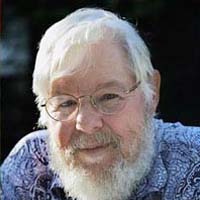


Member, Freestyle Advisory Board of Photographic Professionals
Ted Orland lives in Santa Cruz, California, and pursues parallel careers in teaching, writing & photography. He served as Ansel Adams' Assistant in the 1970's, taught at Adams' annual Yosemite Workshop for fifteen years, and currently teaches photography at Cabrillo College. Ted is co-author (with David Bayles) of the classic artists' survival guide, Art & Fear, and author of its recent companion piece, The View From The Studio Door. (He's also the creator of the delightfully subversive Photographic Truths poster.) Ted has explored a wide range of subject matter and photographic technique over the years. His recent Holga camera images are featured in Michelle Bates' wonderful book Plastic Cameras.
| Making Holga Panoramas |
| Working With Holga |